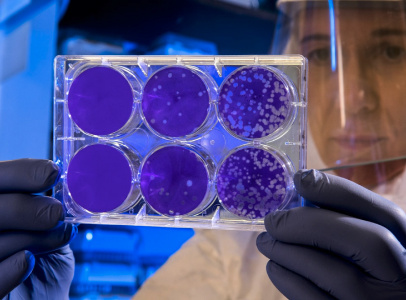Impact pathways
Enabling science
-
P1Publication-citation-recognition
This pathway follows the traditional idea of ‘knowledge push’ where RIs generate scientific publications (either directly or via users). These are, in turn, cited by others and eventually become part of a new body of knowledge. That body of knowledge later finds (conscious or unconscious) recognition within a broader research community and society. Final recipients of the knowledge generated by the RI may further translate it into economic benefits or apply it to societal problem-solving efforts. This pathway may therefore connect to P3, P7 and P8.
More information -
P2Employment, operations & standardised procurement
This pathway investigates the effects of the existence of the RI as an economic actor in terms of jobs, wages, local spending, running costs and the procurement of goods and services related to the standard operations of the RI. It may be of particular relevance to large-scale physical infrastructures and/or those that employ high numbers of staff and/or have high operational costs.
More information -
P3Technology transfer and licensing
This pathway expands on the traditional ‘knowledge push’ idea by adding the element of a proactive approach by the RI to communicate, sell or license results and findings of its research activities to suitable recipients. In cases where the end recipients are from the private sector and the developed technology or knowledge is of interest to industry, this pathway links to P7.
More information -
P4Learning and training through joint development of instruments and tools
This pathway explores impacts related to activities that involve the RI and external, public or private entities that jointly develop tools, instruments, processes, solutions, etc. The notion of specialised procurement is included as it relates to the commissioning of specific products and solutions that are not readily available on the market (as in P1). This pathway is expected to follow closely innovation activities around the RI and may be of particular importance to RIs that are in the design, construction or upgrading phase of their lifecycle.
More information -
P5Learning and training by using RI facilities and services
This pathway focuses on the impacts that originate from the fact that an RI engages directly or indirectly with its users. In particular, it covers aspects related to user training i.e. transmission of knowledge and know-how from RI staff to users, training on the usage of specific equipment, tools, processes, methods etc., allowing them to (independently) access and benefit from the RI’s resources. It may also include feedback loops from users to RI managers and operators, to improve internal processes and expand the service offering and delivery based on user needs.
More information -
P6Training and higher education cooperation
This pathway recognises the importance of the RIs in delivering training to (young) researchers, PhDs, post-docs and students. This may be achieved through specific training courses, internships, scientific visits as well as participation in defining and implementing academic curricula. The cooperation of RIs with research-performing and higher-education institutions/universities is articulated by analysing how RIs achieve impacts in the area of human capital development.
More information

Problem-solving
-
P7Interactive problem-solving for the private sector (industry)
This pathway connects RIs directly to impacts through a stream of demands articulated by users that come from the private sector. These may be either large companies or SMEs. Specifically, the interaction allows RIs to provide solutions to a problem that responds to users’ needs and follows defined specifications.
More information -
P8Addressing societal and public-sector challenges
This pathway connects RIs directly to impacts through a stream of demands articulated by users from public authorities (governments, ministries, agencies, etc.) either directly or indirectly though the definition of specific (societal) challenges or priorities to be addressed by the research community in general, or RIs more specifically. The challenges are issued, for example, by national, European or international bodies. We note that societal challenges may also be addressed by the private sector (under P7).
More information -
P9Provision of specifically curated/edited data
The creation and deployment of RIs that produce or provide research data enables the research community, public and private entities to exploit these (digital) resources for their R&D or other purposes. As RIs across all fields of research provide curated, pre-processed data – often organised in databases – these become a valuable resource to further develop products, innovations, studies, policies, etc. This pathway branches out into several different directions depending on how data is provided and by whom. It becomes especially relevant where virtual infrastructures pool information from different sources. Through such central provision and standardisation, relevant data becomes not only more visible but also much easier to use productively.
More information

Science and society
-
P10Changing fundamentals of research practice
This pathway looks into how RIs change the ways science is being done and how they open up possibilities for new approaches to research both in a cognitive and methodological sense. This subsequently affects – and arguably strengthens – all existing impacts of science. Thanks to their critical mass (in terms of users or the respective research community) RIs have the opportunity to define how (empirical) science is conducted in their field, outline new formal standards, common operational frameworks (rules, processes, toolkits, procedures, codes of conduct) and improve methodologies which eventually lead to better, more reliable, valid and broadly accepted outcomes with greater effects on policy, society and the economy. This pathway is of particular relevance to distributed and data-based RIs and it may connect to P11.
More information -
P11Creating and shaping scientific networks and communities
This pathway addresses how RIs contribute to the creation of networks among researchers, and how the effects generated by these interactions generate societal and economic impacts. In particular, distributed RIs create ‘communities of practice’ by providing staff and user-training opportunities. Exchange of experiences and practices among staff members who cooperate on concrete issues and find solutions to common challenges, serving as an ‘eye-opener’ function for problems that would either not occur or could not be solved in traditional, single-site operations. RIs also induce further networking effects among their user communities whether they are single-sited or distributed.
More information -
P12Promoting engagement between science, society and policy
RIs broaden access and active usage of scientific outputs and information beyond the research community, to address a wider group of stakeholders, policy makers, private actors, NGOs and the general public who may have different ability levels and motives for engaging in RI activities. This pathway looks into how RIs can engage in dialogue and cooperation with these groups in exploring new, qualitatively different avenues of data interpretation – which may boost the legitimacy of research efforts and the credibility of the RIs themselves. Such interaction may also help solving some previously unresolved research challenges. Activities related to citizen science, public access to research data (in addition to Open access), provision of scientific, evidence-based advice for policy are included in this pathway.
More information -
P13Communication and outreach
Science communication raises awareness of science, with secondary effects achieved in understanding the services RIs provide to the public and private sectors, and more generally RIs’ contributions to society. This pathway is primarily directed toward society and it may include, broadly, dissemination activities that target the media, and any other communication channels that would increase RIs’ visibility and position in the political, societal and economic context.
More information

Help us improve the current understanding of impact pathways!
Thank you!
Your feedback was successfully submitted!
